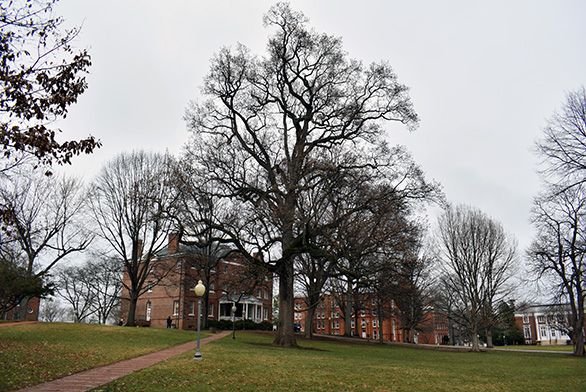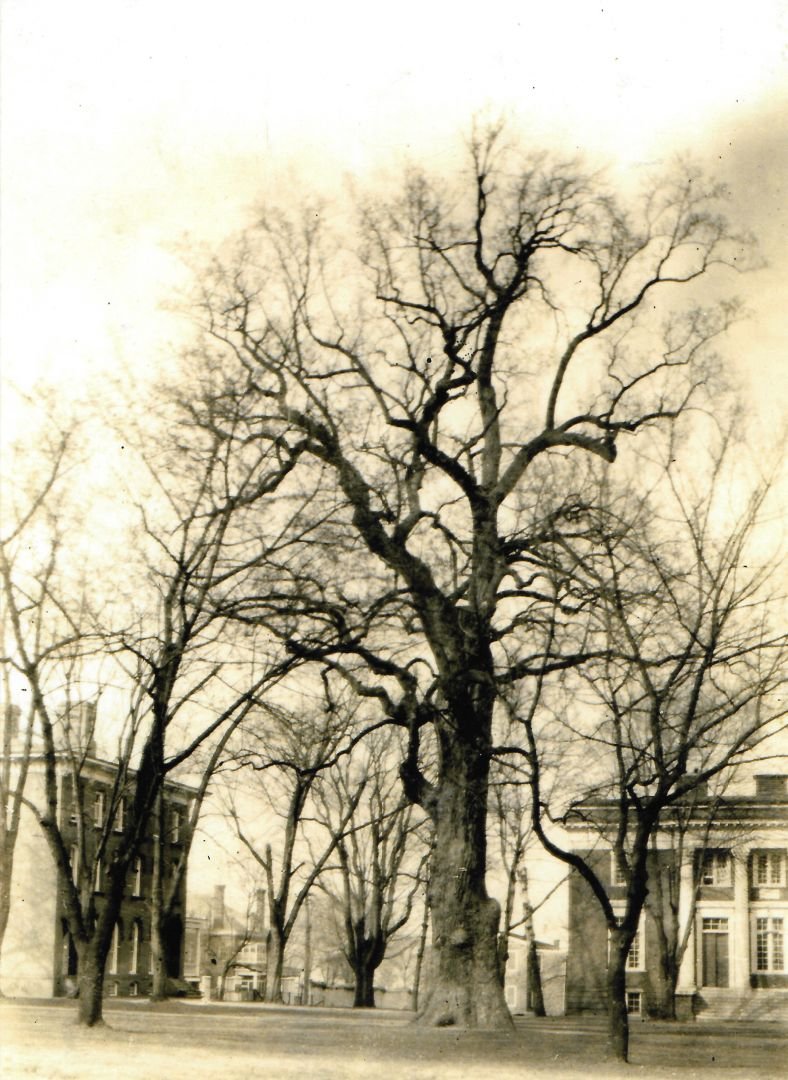Liberty Tree Project Grows
February 28, 2018 | By Tim Pratt

As the Revolutionary War loomed in the 1700s, colonists gathered under the Liberty Tree at St. John’s College in Annapolis to plan their rebellion against the British.
While the United States formed and grew over the subsequent years, so did the tulip poplar, ultimately reaching more than 120 feet in height before it was killed by Hurricane Floyd in 1999.
Now, direct descendants of the Maryland Liberty Tree are thriving throughout the state, including 200 seedlings at an Eastern Shore tree nursery. Those seedlings are available for purchase, giving members of the public a chance to buy living pieces of Maryland—and St. John’s—history.
“I’ve always been fascinated with trees that have history with them,” says Champ Zumbrun, a volunteer with the Allegany County Forestry Board who spearheaded the project. “I’m trying to get the next generation interested in this history and pass down their heritage to them.”
The seedlings were grown through a joint effort between St. John’s, the Allegany County Forestry Board, John S. Ayton State Tree Nursery, Allegany Soil Conservation District and W-22 Lions Club of Maryland. Standing 12- to 18-inches tall, they’re available to purchase for $30.
The seedlings grew from seeds taken off a scion of the Liberty Tree in 2016. The scion—a grafted tree with the same DNA—was planted on campus in 1889 and remains alive and well today. Because the scion has the same DNA as the original Liberty Tree, so do its seeds and the 200 new seedlings.
The goal of the project is to regenerate trees of historic significance; promote the value and benefits of trees to current and future generations; and inform, educate and inspire youth with stories of their connection to “legacy” trees.
“I’m a forester and I love trees, and it’s important for me to pass this on,” Zumbrun says.
Zumbrun began collecting seeds from the Liberty Tree scion several years ago. He tried to germinate them in his back yard, but was unsuccessful.
The longtime forester then contacted the state, and sent a new batch of seeds to germinate at the John S. Ayton State Tree Nursery near Preston. Thirteen of those seeds grew into seedlings that were planted at historic sites throughout Maryland, including one at the State House and two on the St. John’s campus. Zumbrun notes the historical significance in 13 seedlings germinating successfully.
“I saw that as a sign of the original 13 colonies,” he says.
In the fall of 2016, members of the Allegany County Forestry Board traveled to St. John’s to collect more seeds from the scion. The board then sent the seeds to the tree nursery, where 200 of them germinated and are ready for planting this spring.
History

Liberty Trees were gathering places for Sons of Liberty groups throughout all 13 colonies. From their meetings and discussions, the seeds of the American Revolution were planted.
Under the Annapolis tree, American revolutionaries advocated independence from Great Britain during the Stamp Act of 1765.
Samuel Chase and William Paca, two members of the Sons of Liberty’s Annapolis chapter who gathered for meetings under the Liberty Tree at St. John’s, became signers of the Declaration of Independence. The Annapolis tree also stood witness when George Washington resigned his military commission as commander of the Continental Army on December 23, 1783, at the nearby State House.
At one time, the tree was the largest known of its species in the United States, with a height of 124 feet, a circumference of 26 feet and a spread of 117 feet. It was approximately 400 years old when Hurricane Floyd struck in 1999.
Zumbrun is grateful to St. John’s for creating a scion of the tree in the 1880s.
“In other words—and incredibly thanks to the foresight of officials at St. John’s College—the genetics of the original, ancient Liberty Tree are replicated and live on and are preserved in the Liberty Tree now growing at St. John’s College,” Zumbrun says.
Two seedlings, grown from the scion’s seeds, were planted on campus near the student vegetable garden. They will allow another generation of Liberty Trees to flourish.
J.R. Pappas, director of Buildings and Grounds at St. John’s, says the college would like to transplant the seedlings to a more prominent location on campus when they reach the appropriate size. He’s happy to see the project’s success.
“Champ brings a huge amount of passion to this story and I think it helps to raise awareness about environmental resources when you have such great historical context,” Pappas says.
To order a seedling, make checks payable for $30 to the Allegany County Forestry Board, and send to the following address:
Allegany County Forestry Board
c/o Maryland Forest Service
14110 Pleasant Valley Road
Flintstone, MD 21530

